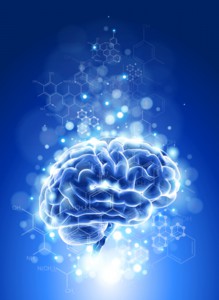Why Scientific Literacy and Learning Enhance Brain Function and Neural Health
 Often in discussing health related findings with non-scientists, I’ve found that scientific literacy in the general population tends to be inadequate for evaluating scientific claims. A surprising number of people are reluctant to study science despite the potential to benefit from the vast amount of useful knowledge being accumulated by scientists. Neil DeGrasse Tyson discussed a similar issue with the New York Daily News several years ago (A Cry to Pass the Science Test, 2006). In a time when scientific information is constantly reshaping our understanding of the world, a strong foundation in scientific methods and ideas is essential. A better understanding of biological sciences, for example, improves the ability to monitor one’s own heath and discuss health issues with health care professionals. The consequences of learning science are especially interesting when thinking about neural health. As it turns out, the very act of studying and learning can help to keep the brain healthy. There is then a unique and beneficial interplay between studying science, improving health, and improving brain function.
Often in discussing health related findings with non-scientists, I’ve found that scientific literacy in the general population tends to be inadequate for evaluating scientific claims. A surprising number of people are reluctant to study science despite the potential to benefit from the vast amount of useful knowledge being accumulated by scientists. Neil DeGrasse Tyson discussed a similar issue with the New York Daily News several years ago (A Cry to Pass the Science Test, 2006). In a time when scientific information is constantly reshaping our understanding of the world, a strong foundation in scientific methods and ideas is essential. A better understanding of biological sciences, for example, improves the ability to monitor one’s own heath and discuss health issues with health care professionals. The consequences of learning science are especially interesting when thinking about neural health. As it turns out, the very act of studying and learning can help to keep the brain healthy. There is then a unique and beneficial interplay between studying science, improving health, and improving brain function.
To understand this interrelationship, consider what happens when you learn something new. Every mental activity — including learning — is played out as precise electrical and chemical activity in brain cells. The electrical activity specific to studying and learning directly causes the release of a molecule called brain derived neurotrophic factor or BDNF. BDNF was first identified as a growth and developmental factor in the brain, but now is known to be linked to improved learning and memory. When BDNF is increased through this precise learning related neural activity, mental function improves. When BDNF is experimentally blocked, memory formation is made more difficult. How does BDNF help to improve brain function? It helps to physically build and reshape parts of brain cells so that the cells can strengthen their connections to each other. These specific modifiable connections between brain cells account for our ability to form and strengthen memories. Many details in this model of brain training need to be filled in, but clearly, concrete molecular links have been identified to suggest that certain kinds of mental activity are necessarily linked to improved mental ability.
Upon seeing this kind of information about learning and BDNF, more scientifically literate readers would be more capable of accurately interpreting the data. They would also be in a position to implement the stated findings in their own lives. In addition, the actual process of reading and studying this biological mechanism would improve their ability to learn and remember. Thus, someone approaching neural health issues from a scientifically literate perspective would have a remarkable advantage in maintaining their health based on new findings, compounded by the brain nourishing biological effect of the learning process itself. This exciting possibility suggests that studying science is distinctly important for maintaining and improving neural health and brain function.
–> Hemal Pathak, PhD has a PhD in Neuroscience from the University of Pennsylvania and is currently an educator focusing on promoting science education as the founder of TestBankPrep.com.
Pic courtesy of BigStockPhoto
Related articles:
- Brain Plasticity: How learning changes your brain
- Try Thinking and Learning Without Working Memory
Selected References:
- Chen L, Rex C, Sanaiha Y, Lynch G, Gall C, Learning Induces Neurotrophin Signaling at Hippocampal Synapses, Proc Natl Acad Sci, 2010
- Kesslak, J. P., So, V., Choi, J., Cotman, C. W., and Gomez-Pinilla, F. (1998). Learning upregulates brain-derived neurotrophic factor messenger ribonucleic acid: a mechanism to facilitate encoding and circuit maintenance? Behav. Neurosci. 112, 1012–1019.
- Kumar A., Rani A., Tchigranova O., Lee W., Foster T. (2012). Influence of late-life exposure to environmental enrichment or exercise on hippocampal function and CA1 senescent physiology. Neurobiol. Aging 33, 828.e1–828.e17.
- Tong L., Prieto A.P., Kramar E.A., Smith E.D., Cribbs D.H., Lynch G., Cotman C.W. (2012). Brain-derived neurotrophic factor-dependent synaptic plasticity is suppressed by interleukin-1B via p38 mitogen-activated protein kinase. J. Neurosci. 32, 17714–17724.


